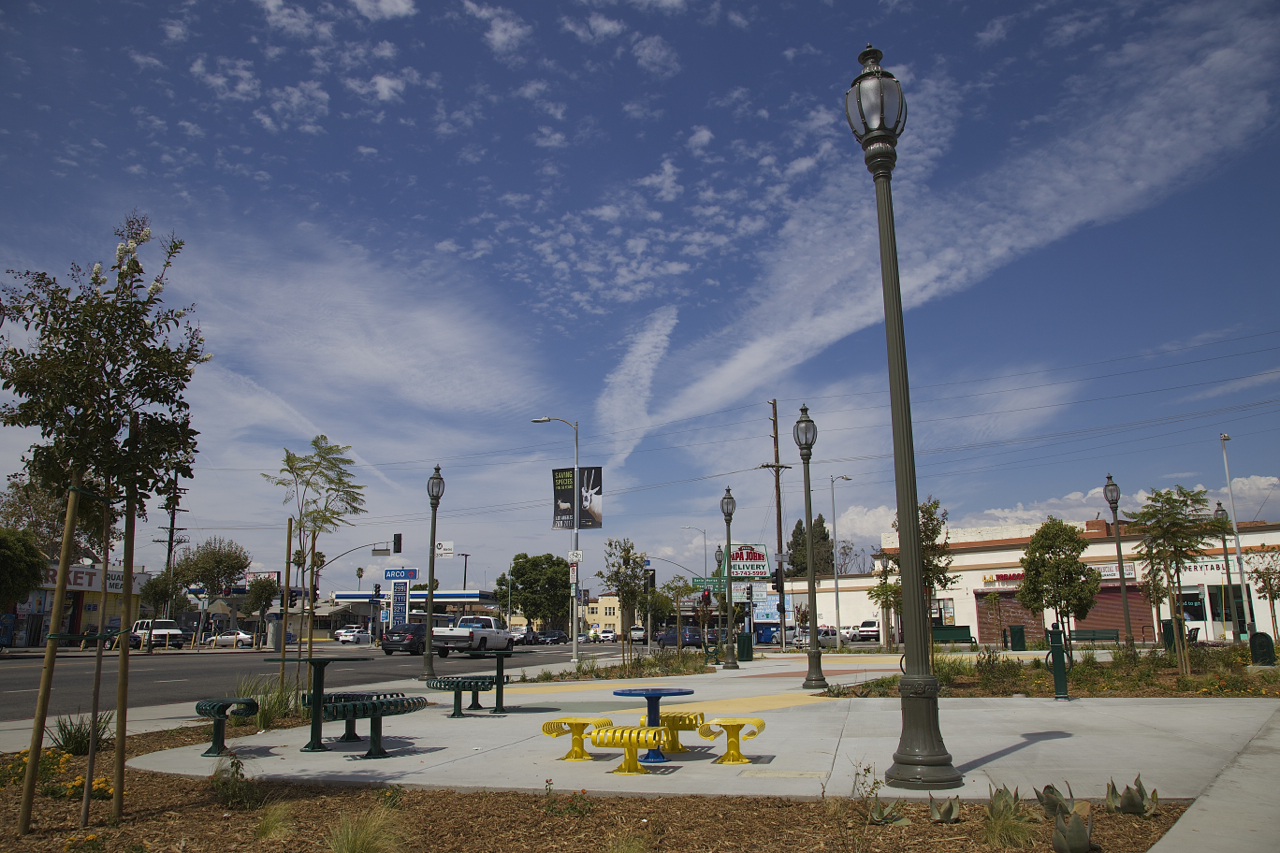The $600,000 make-over of the Hoover Triangle is finally complete.
The sizable island located along Hoover between 23rd and 24th Streets was long overdue for a sprucing up.
Although home to two bus stops - the 603 (running between Glendale and L.A. Trade Tech College) and the 200 (running from Broadway and King through MacArthur Park to the St. Vincent Medical Center in Echo Park) - it hadn't ever been particularly people-friendly. Narrow meandering paths, scraggly grass that was dead most of the year and often accumulated trash, and a boulder that doubled as seating were complemented with an inexplicable fence (below).
In 2014, the community (particularly the area's neighborhood council) and the city, along with USC architecture students, rolled up their sleeves and launched a series of workshops and events aimed at gathering community input on potential designs aimed at remedying this missed opportunity.
The result is what you see at top - an easily accessible, colorful open space with drought-tolerant planting, seating around the perimeter, a kids' table and seating, decorative bike racks, and additional lighting.
What you don't see is shade.
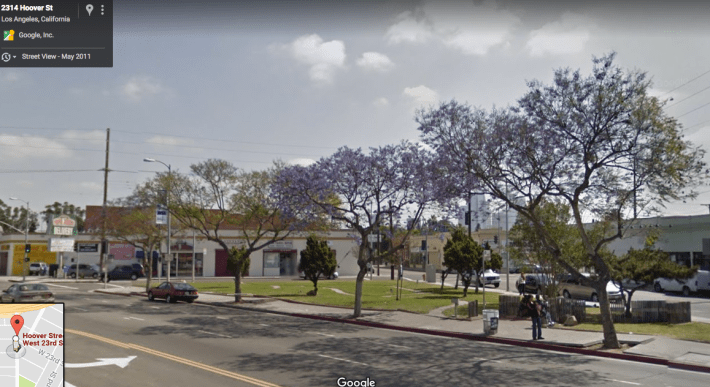
Deeply imperfect as Triangle 1.0 was, it had shade in its favor.
The Jacarandas that lined the Hoover side helped shield those waiting for the 200 from the hot summer sun at certain times of the day. And they had the added bonus of being riotously beautiful for a month and a half every year.
Construction of Triangle 2.0 saw all those trees ripped out and replaced with saplings.
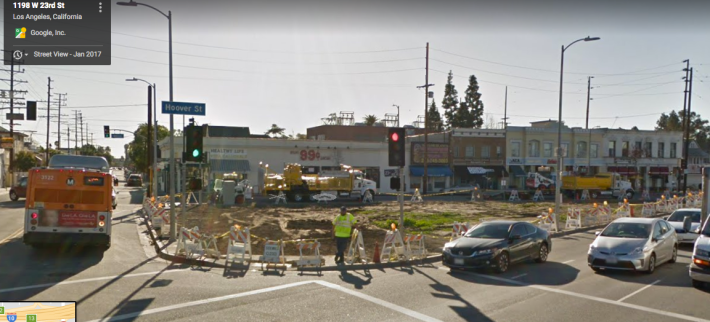
The new trees (including a couple of sapling Jacarandas) are set back a bit from the sidewalk and at some distance from the stops (below, at left), meaning they will be unlikely to shade waiting passengers, or even much of the seating around the plaza, until their canopies mature ten or fifteen years from now.
Some of the flowering trees (Crape Myrtles), while beautiful, will never grow tall enough to offer anyone a shady canopy.
Which means that, between the now-more-plentiful cement and the lack of shade, passengers will have nowhere to hide during heat waves, like the one we just endured, for a decade or more to come.

I will confess that the lack of the incorporation of shade into planning continues to confuse me, especially around transit.
Shade certainly comes up often enough.
In presentations around potential designs for the Hoover Triangle with the local neighborhood council, shade was consistently cited as an important feature.
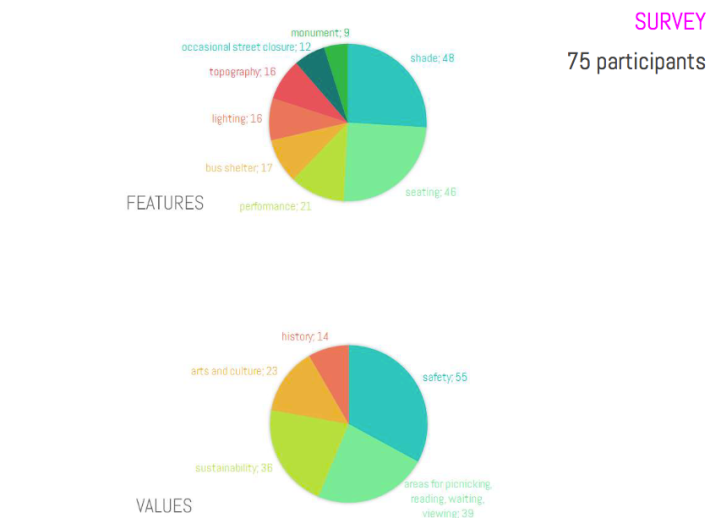
The only feature that came close in importance was seating (above). And, as one might expect, people seemed to assume that seating and shade would be best in combination, not separate from each other. Three of the four proposed schemes groups worked on during the 2015 design workshops featured shade (if not covering the entire plaza, then at least shading the bus stops).
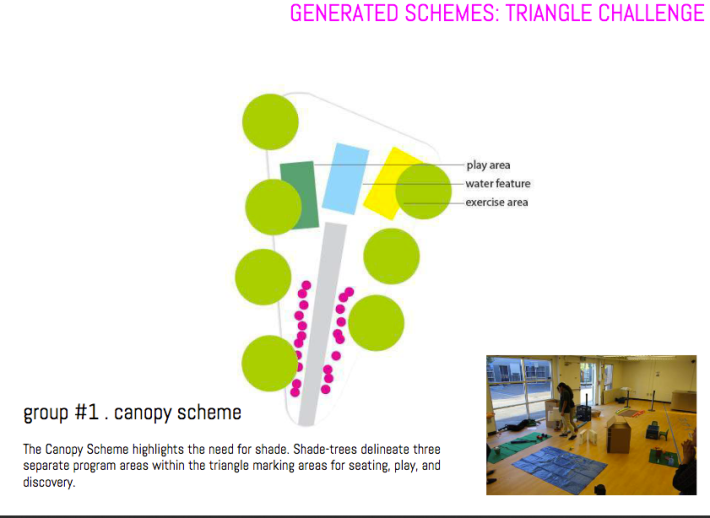
Planners are not unaware that shade is important for those who are dependent on transit and walking.
Certainly, the ultimate intention of the plaza was to provide users with shade.
At least, at some point.
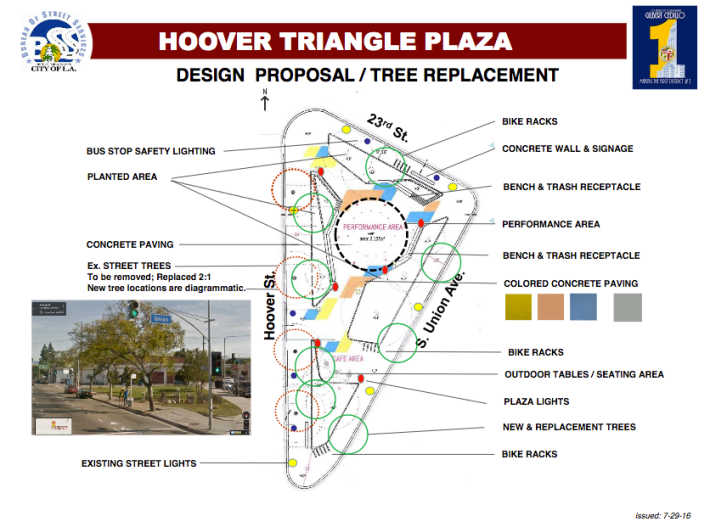
Even city officials seem to understand the importance of shade.
Otherwise they probably wouldn't feel the need to bring canopies with them everywhere they go, as they did for both the groundbreaking for this project and last week's ribbon cutting (below), right?
Revamping the Hoover Triangle in Councilmember Gil Cedillo's Council District 1!
— LA CityView35 (@LACityView35) September 8, 2017
Cameraman: Roland Luna@gilcedillocd1 @gilcedillo pic.twitter.com/6fuAwjCKLN
But much like with the Eastside Access project in Boyle Heights, there seems to be no plan for how to bridge the shade gap between today and the ten or fifteen years from now that the canopies will begin to mature.
While many have joked that planners expect trees will mature just in time for the gentrifiers to move in, that doesn't seem so far-fetched to transit-dependent residents who spend a lot of time walking in communities where the shade gap is never addressed.
The first phase of the Eastside Access project (meant to improve walkability and biking along 1st Street to facilitate connections to the Gold Line), saw 90 mature trees ripped out along one of the community's most important commercial corridors back in 2013. The bike racks - egregiously colorful butterflies and flowers that stand in for the nature that is no longer there - and the saplings that replaced them continue to make the street feel barren and uninviting to pedestrians, four years on.
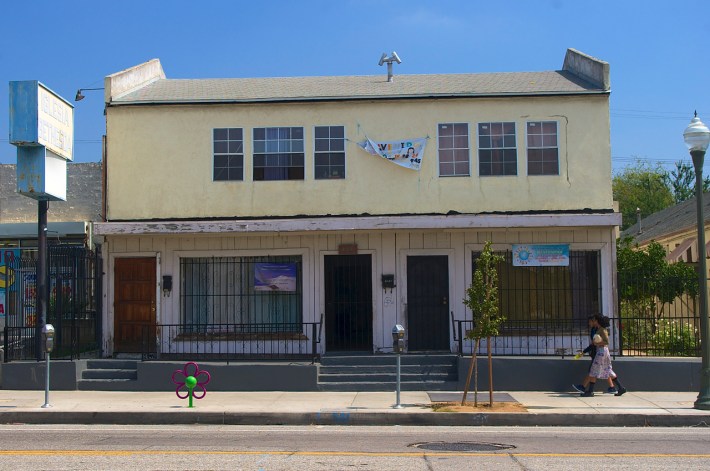
As phase 2 of the Eastside Access project gets underway (more on that later this week), big trees along key corridors are again being targeted for removal.
Meaning that residents in this transit-dependent neighborhood with poor air quality and some of the lowest tree canopy coverage in the city are once again pleading with the city to leave their trees be.
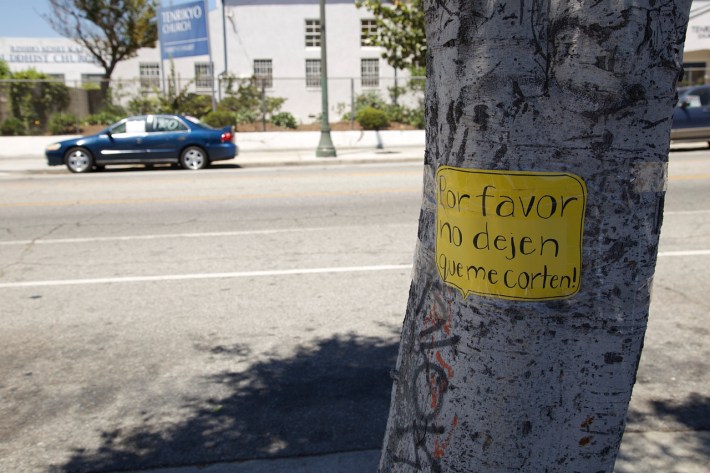
The fact that these improvements to the public space tend to be designed by people who live in better-resourced communities and/or have a range of mobility choices at their disposal may help explain why the shade gap is often overlooked in planning for lower-income communities of color.
In gentrifying neighborhoods, where people have the power and resources to clamor for amenities, shade seems more likely to be prioritized. Highland Park's recent $3 million make-over of a vacant lot included an enormous canopy shading park equipment so kids could use it year-round and at all times of the day.
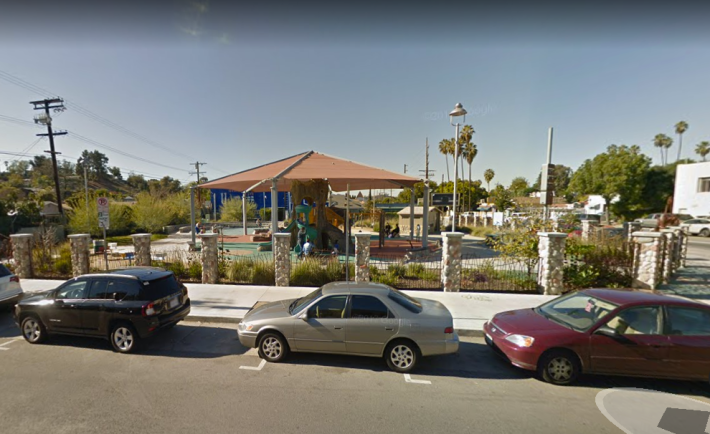
The $700 million renovation of the University Village - located just down the street from the Hoover Triangle - didn't skimp on shade structures for its plazas, either. And the three Expo Line stops that serve USC all have shade structures. [True, they are more decorative than functional, but they are better than nothing.]
The shade gap is real. And the hotter our summers continue to be, the more uncomfortable it will continue to get for those that have the fewest choices about how they get around our streets. To not do better by those folks by taking their mobility needs into consideration in planning is, well...kind of shady.

